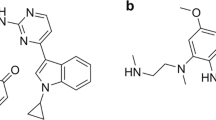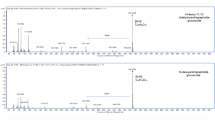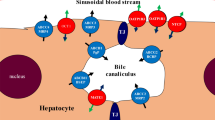Abstract
Simnotrelvir (SIM0417), an inhibitor of the 3CL protease of SARS-CoV-2, has been identified as a CYP3A sensitive substrate. This study investigated the pharmacokinetics, metabolism, and mass balance of simnotrelvir following a single oral dose of 750 mg in six healthy Chinese male subjects, co-administered with four doses of 100 mg ritonavir. Analysis using 19F qNMR combined with LC-MS/MS showed that the parent drug M0 constituted over 90% of the drug-related components in plasma. Of the administered dose, 55.4% (54.3% of M0) was recovered in urine, while 36.7% (4.57% of M0) was excreted in feces. UPLC/Q-TOF MS was used to identify metabolites in human plasma, urine and feces. Notably, oxidative metabolites catalyzed by CYP3A were scarcely detected in these matrixes. The amide hydrolyzed metabolite M9 and the cyano hydrolyzed metabolite M10 were recognized as the predominant metabolites, with the main excretion being through feces (19.0% and 12.7% of the administered dose, respectively). In vitro experiments indicated that M10 is primarily formed in the duodenum and jejunum, with further metabolism to M9 by microbiota in the large intestine. Overall, the co-administration of simnotrelvir with ritonavir led to predominant metabolism by intestinal enzymes or microbiota, resulting in hydrolyzed metabolites. These findings highlight the critical role of intestinal metabolism in the pharmacokinetics of simnotrelvir and emphasize the need to consider interactions with antibiotics and individual differences of intestinal microbiota.
This is a preview of subscription content, access via your institution
Access options
Subscribe to this journal
Receive 12 print issues and online access
$259.00 per year
only $21.58 per issue
Buy this article
- Purchase on SpringerLink
- Instant access to full article PDF
Prices may be subject to local taxes which are calculated during checkout






Similar content being viewed by others
References
World Health Organization [homepage on the Internet].data.who.int, WHO Coronavirus (COVID-19) dashboard > Cases [Dashboard]. [updated 2024 May 5; cited 2024 May 23] Available from: https://data.who.int/dashboards/covid19/cases?n=c.
Zhu N, Zhang D, Wang W, Li X, Yang B, Song J, et al. A novel coronavirus from patients with pneumonia in China, 2019. N Engl J Med. 2020;382:727–33.
Zhou P, Yang XL, Wang XG, Hu B, Zhang L, Zhang W, et al. A pneumonia outbreak associated with a new coronavirus of probable bat origin. Nature. 2020;579:270–3.
Jin Z, Du X, Xu Y, Deng Y, Liu M, Zhao Y, et al. Structure of M(pro) from SARS-CoV-2 and discovery of its inhibitors. Nature. 2020;582:289–93.
Cao B, Wang Y, Lu HZ, Huang CL, Yang YM, Shang LH, et al. Oral simnotrelvir for adult patients with mild-to-moderate Covid-19. N Engl J Med. 2024;390:230–41.
Wang FX, Xiao W, Tang YM, Cao ML, Shu D, Asakawa T, et al. Efficacy and safety of SIM0417 (SSD8432) plus ritonavir for COVID-19 treatment: a randomised, double-blind, placebo- controlled, phase 1b trial. Lancet Reg Health West Pac 2023;38:100835.
Jiang X, Su H, Shang W, Zhou F, Zhang Y, Zhao W, et al. Structure-based development and preclinical evaluation of the SARS-CoV-23C-like protease inhibitor simnotrelvir. Nat Commun. 2023;14:6463.
Yang XM, Yang Y, Yao BF, Ye PP, Xu Y, Peng SP, et al. A first-in-human phase 1 study of simnotrelvir, a 3CL-like protease inhibitor for treatment of COVID-19, in healthy adult subjects. Eur J Pharm Sci. 2023;191:106598.
Ramamoorthy A, Bende G, Chow ECY, Dimova H, Hartman N, Jean D, et al. Human radiolabeled mass balance studies supporting the FDA approval of new drugs. Clin Transl Sci. 2022;15:2567–75.
Pearson D, Garnier M, Luneau A, James AD, Walles M. 19)F-NMR-based determination of the absorption, metabolism and excretion of the oral phosphatidylinositol-3-kinase (PI3K) delta inhibitor leniolisib (CDZ173) in healthy volunteers. Xenobiotica. 2019;49:953–60.
Singh RSP, Walker GS, Kadar EP, Cox LM, Eng H, Sharma R, et al. Metabolism and excretion of nirmatrelvir in humans using quantitative fluorine nuclear magnetic resonance spectroscopy: a novel approach for accelerating drug development. Clin Pharmacol Ther. 2022;112:1201–6.
James AD, Marvalin C, Luneau A, Meissner A, Camenisch G. Comparison of 19F NMR and 14C measurements for the assessment of ADME of BYL719 (Alpelisib) in humans. Drug Metab Dispos. 2017;45:900–7.
U.S. Food and Drug Administration: Bioanalytical Method Validation Guidance for Industry. 2018; Available from: https://www.fda.gov/media/70858/download.
U.S. Food and Drug Administration: Clinical Pharmacology Considerations for Human Radiolabeled Mass Balance Studies. 2022; Available from: https://www.fda.gov/regulatory-information/search-fda-guidance-documents/clinical-pharmacology-considerations-human-radiolabeled-mass-balance-studies.
Asakura M, Fukami T, Nakajima M, Fujii H, Atsuda K, Itoh T, et al. Hepatic dipeptidyl peptidase-4 controls pharmacokinetics of vildagliptin in vivo. Drug Metab Dispos. 2017;45:237–45.
Kong FD, Pang XY, Zhao JH, Deng P, Zheng MY, Zhong DF, et al. Hydrolytic metabolism of cyanopyrrolidine DPP-4 inhibitors mediated by dipeptidyl peptidases. Drug Metab Dispos. 2019;47:238–48.
Wang K, Zhang ZW, Hang J, Liu J, Guo FS, Ding Y, et al. Microbial-host-isozyme analyses reveal microbial DPP4 as a potential antidiabetic target. Science. 2023;381:501.
Tahara A, Matsuyama-Yokono A, Nakano R, Someya Y, Hayakawa M, Shibasaki M. Antihyperglycemic effects of ASP8497 in streptozotocin-nicotinamide induced diabetic rats: comparison with other dipeptidyl peptidase-IV inhibitors. Pharmacol Rep. 2009;61:899–908.
Singh RSP, Toussi SS, Hackman F, Chan PL, Rao R, Allen R, et al. Innovative randomized phase I study and dosing regimen selection to accelerate and inform pivotal COVID-19 trial of nirmatrelvir. Clin Pharmacol Ther. 2022;112:101–11.
Acknowledgements
This research was partially supported by the National Natural Science Foundation of China (No. 82073924) and grants from State Key Laboratory of Drug Research. We acknowledge the clinical teams at the First Affiliated Hospital of Shandong First Medical University and Shandong Provincial Qianfoshan Hospital for conducting the human mass balance study of simnotrelvir (Principal investigator: Prof. Wei Zhao). We would also like to acknowledge EditSprings (https://www.editsprings.cn) for the expert linguistic services provided.
Author information
Authors and Affiliations
Contributions
ZYW, YMR, and XYC designed and performed research, analyzed data and wrote the paper; SWH, NXZ, MXD, and YL performed research and analyzed data; YY, ZJG, SSX, JC, and AHG contributed the test drug and extended financial support.
Corresponding author
Ethics declarations
Competing interests
YY and JC are employees of Simcere Zaiming Pharmaceutical Co. Ltd. ZJG, SSX, and AHG are employees of Jiangsu Simcere Pharmaceutical Co., Ltd. The other authors declare that they have no competing interests.
Supplementary information
Rights and permissions
Springer Nature or its licensor (e.g. a society or other partner) holds exclusive rights to this article under a publishing agreement with the author(s) or other rightsholder(s); author self-archiving of the accepted manuscript version of this article is solely governed by the terms of such publishing agreement and applicable law.
About this article
Cite this article
Wang, Zy., Ren, Ym., Hu, Sw. et al. 19F qNMR based pharmacokinetics, metabolism and mass balance studies of SARS-CoV-2-3CL protease inhibitor simnotrelvir (SIM0417) in humans. Acta Pharmacol Sin (2024). https://doi.org/10.1038/s41401-024-01393-7
Received:
Accepted:
Published:
DOI: https://doi.org/10.1038/s41401-024-01393-7



